Xeriscaping
If you've never heard the term xeriscaping, you probably don't live in a drought-prone area. Xeriscaping basically means trying to create a drought-tolerant landscape in order to conserve water. The idea is that you still want to have a nice looking yard, but you want to cut back on water as much as possible. With some careful planning, this is possible. It may not be as green and lush as a thick lawn of Kentucky Bluegrass would be, but you can still make it quite presentable.As a bonus, cutting back on water not only saves you money, but it saves you time watering. Drought-tolerant plants aren't as needy as a regular grass lawn, so you don't have to stress about shifts in weather.
If you're a landscaper looking to expand your repertoire or you're a DIYer, this guide can will you started in the world of Xeriscaping.
Xeriscaping Options
There are many tools you can use in your xeriscaping. Here are some of the most common ones:
- Rocks - It's hard to beat a good old rock. No water needed at all. It just sits there and looks good all day long. Fertilizer? None for me, thanks.
- Drought Resistant Shrubs - This is a solid go-to option. It's a nice way to keep some green in the yard, but without excessive watering.
- Mulch - Mulch is great because it's versatile. If you've already covered a significant portion of the area with rocks, mulch will break up the landscape and give you a different color. Some mulch comes with dye, so you can even go with black or red if you want. The dyes do fade, but you can buy a spray to repaint them every couple of years.
- Succulents - They're little, but what they lack in size you can make up with quantity. They're drought-hardy and able to thrive even in a desert.
- Ornamental Grass - These are still grass, but they don't grow like a turf grass, and therefore require less water. They add a nice splash of green, and a texture that's a little friendlier than most shrubs.
There are a lot of right answers in xeriscaping. If you want to go mainly with rocks, and then accent with a few shrubs, that's great. It's totally up to your opinion. You can experiment with different ratios of flowers to mulch, or rocks to ornamental grass. It should turn out looking pretty decent because nature is beautiful.
Drought-Resistant Plants
The trick with plants is to find something that will still look domesticated, for lack of a better term, while still cutting back on water needs. Try to get a decent variety of colors, shapes, sizes, and textures, as that tends to make ordinary plants look a little more special. It brings out their natural beauty.
It would be difficult to list every plant, but here are some proven winners:
Russian Sage
This is similar to sagebrush, but it has bluish-purple flowers that bloom in late summer and fall. This helps it stay lively looking when everything else is drying up from heat.Russian Sage is resistant to bugs and disease, and it doesn't even care if you have bad soil. It grows up to 3-5 feet tall, and it likes to spread. All in all, it's a pretty easy to handle plant with good color.
Like many flowering plants, it's great for attracting bees and butterflies. And by helping the bees, we're helping pollinate our local farms and gardens.
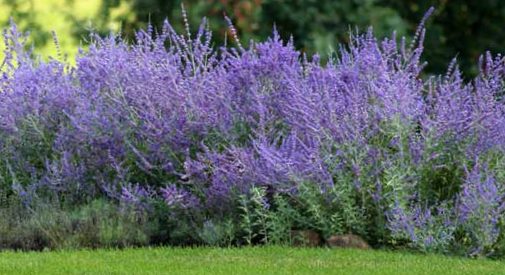
Russian Sage
Lavender
It's strong against heat, bugs, and bad soil. It has nice purple flowers that bloom through summer. It is also a fan-favorite among honey bees.
It tends to grow outward a lot, and you might need to trim it back a bit. It looks nice, and it smells nice though.

A lavender field.
Salvia
If you like lavender, but the plant grows a little bit more wildly than you'd like, try Salvia. It's got the benefits of lavender, but with a more tame growth habit. It tends to stay a little more contained, but still gives you that nice splash of purple.
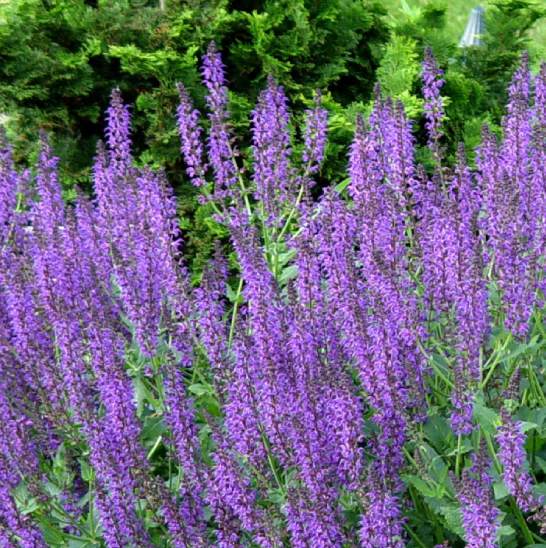
The Salvia Plant
Ceanothus
This is a big bush. It's got great purple flowers that clump into fluffy little balls. If you want to fill a large space, ceanothus to the rescue.
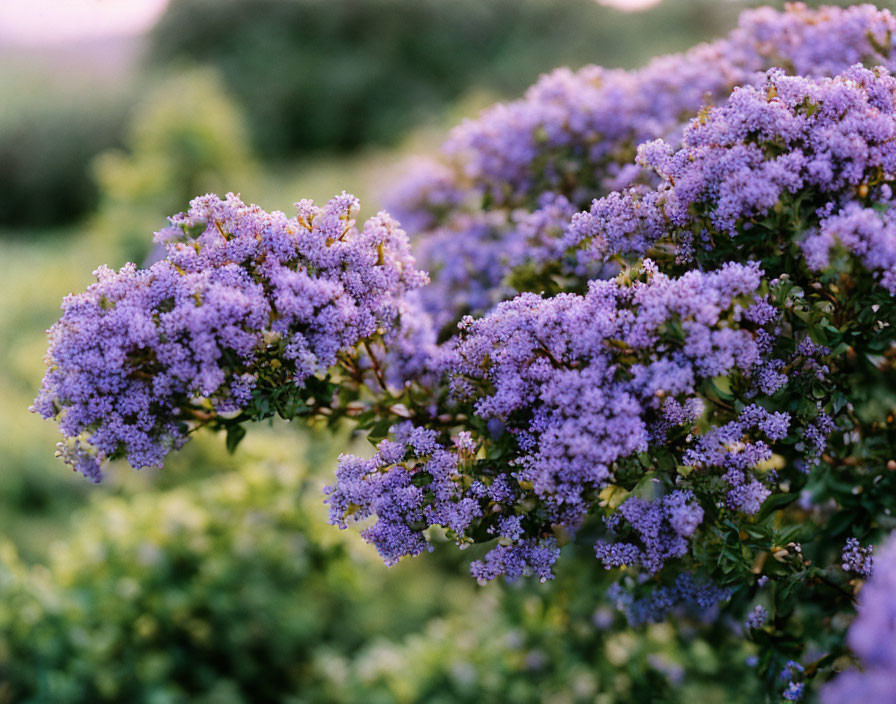
Ceanothus
Artemesia
This unique shrub isn't known for it's flowers. It's leaves are sort of whitish, so it sets itself apart from neighboring plants. This could look very interesting next to a flowering plant in order to make a nice contrast.
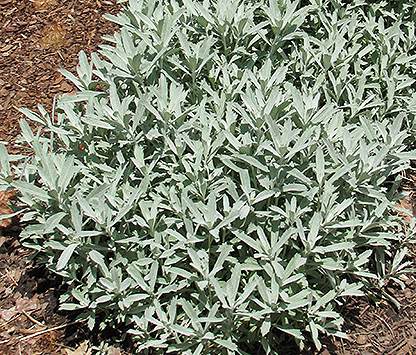
Artemesia
Yarrow
There are a few varieties of yarrow, all with nice flowers on top. The flowers are often white, but you can also get pink and yellow too. They bloom from spring to summer. This can help you get some color in the off-times, when other plants are not flowering.
Pollinators enjoy yarrow, so bees and butterflies will hang out around these plants too.

Yarrow Plants
Agave
Agave is a succulent, so it's built for the desert. It stares the sun in the face and says, "I don't need no SPF. Come at me."
Agave looks tough too. It looks like one of nature's self defense mechanisms. It's like a little bundle of plant knives. As such, it's a great way to add another texture to the garden.

Agave
An agave haiku:
Sweet on the inside,
but its mean on the outside.
A plant that fights back.
Aloe Vera
Here's another tough succulent. This baby can survive all sorts of hot weather. Those who have tried using it as a houseplant might find that watering it less is actually better for it.
Aloe is not just an interesting plant. It's known for it's ability to help skin. It's a fantastic anti-inflammatory, and it's gooey nature helps it stick to the skin.
I find the aloe plant interesting, because I've always believed it's the creature inside the Sarlacc Pit. That's probably not official Star Wars canon, but it seems plausible.

The Aloe Vera plant in its native environment.
Buddleia
This is a fairly typical shrub, but the flower shape is very unique. It's like a fluffy cone of purple flowers.
Buddleia has all the benefits of other weather-resistant shrubs.
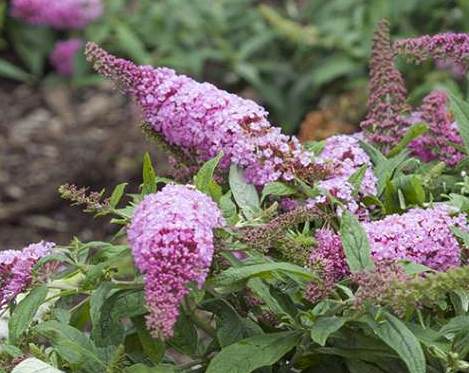
Buddleia
Echinacea
Echinacea is a great option because it doesn't have the same look of the flowering shrubs. This is more like the type of flower you'd see in a traditional garden. It comes in a variety of colors too. There's pink, purple, orange, red, and yellow. It flowers in summer and fall.

Echinacea
Rockrose
If you need some pink to accent your garden, this will fit the bill. It's a fairly small shrub with pink flowers that bloom in spring to early summer.
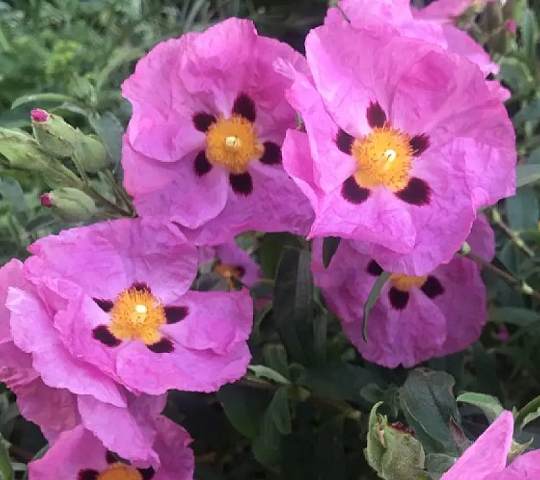
Rock Rose
California Fuchsia
You need some red in your garden. Here, try California Fuchsia. It's a like a red chili pepper plant, but the peppers are flowers.
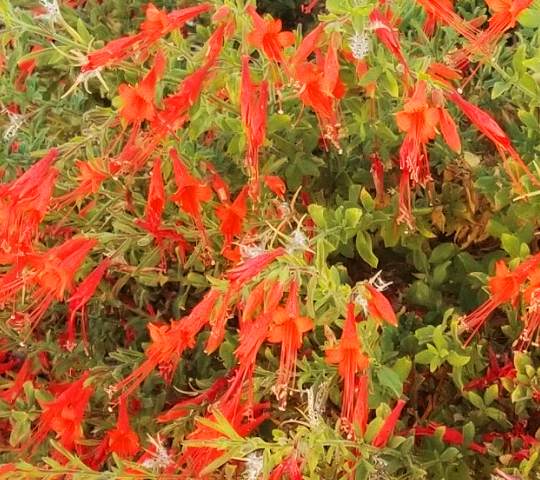
California Fuchsia
Creosote Bush
This shrub isn't necessarily that spectacular looking on its own. Beauty is in the eye of the beholder, of course. It does, however, provide yellow flowers in case you're needing that extra color.

Creosote
Here's a bit of trivia. Xeriscaping was originally known as zeroscaping, presumably because the goal was to use zero irrigation. However, this had to evolve because the use of some irrigation is often necessary. Some of the prettier plants won't survive dry climates with only the natural rainfall. The term xeriscaping was introduced, which was fortuitous. Not only does it sound like the original term, but "xeri" comes from the Greek word "xeros," which means "dry."
